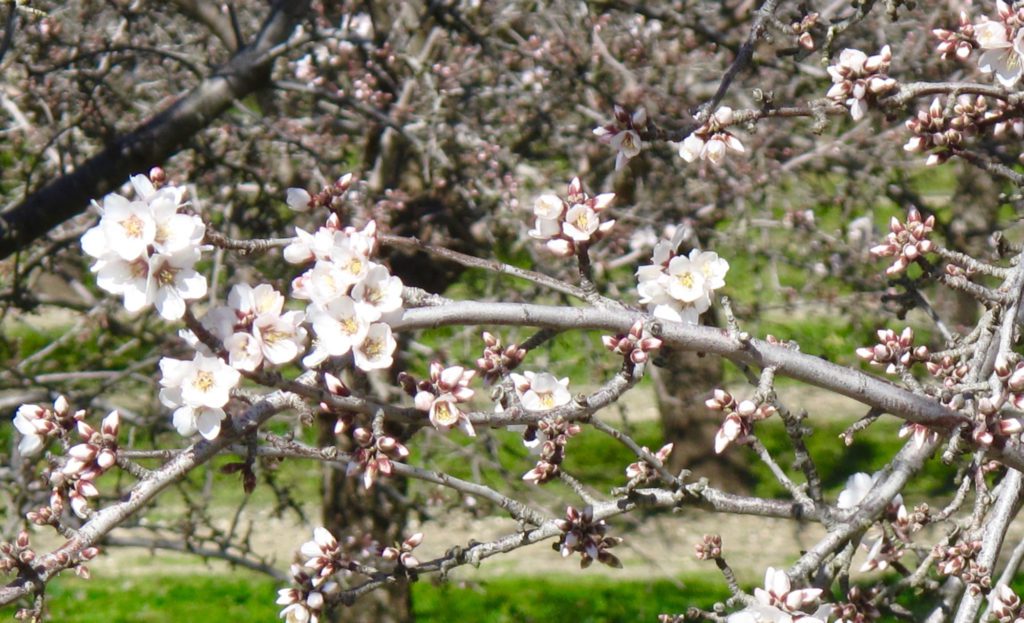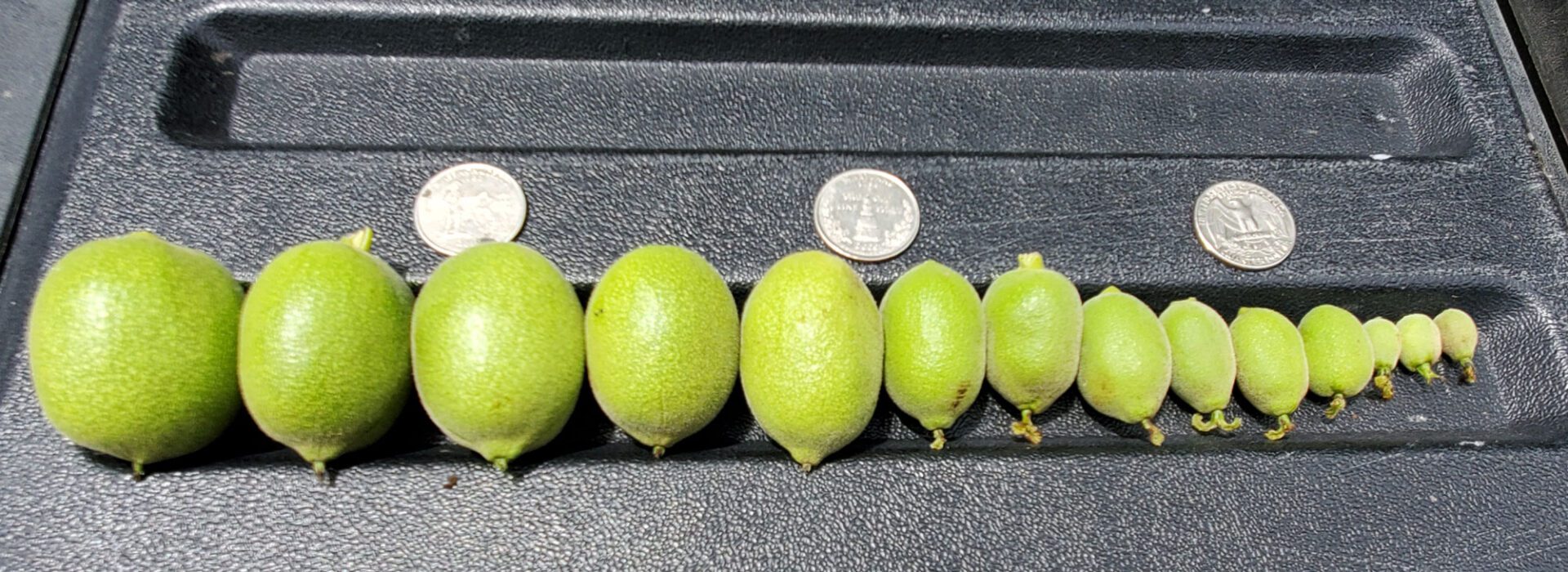
All Photos Courtesy of Justin Nay
While this year’s late rains may be a benefit in postponing the need for irrigation in almond and walnut orchards across the state, the cool and wet spring has left many growers and agriculture advisors worried about what those rains can mean in the way of disease and pests damage.
Independent agriculture consultant, Justin E. Nay, Ph.D., president and CEO of Integral Ag, Inc., said he isn’t sure whether the “very cool temperatures and rainfall from February through May hit any state records, we were probably pretty close, and because of this we are seeing a number of issues in the orchard.”
Luke Milliron, University of California Cooperative Extension (UCCE) farm advisor, Butte, Tehama and Glenn counties, said it remains to be determined exactly what impact the wet weather this spring may have on both crops.
“In almonds, the wet conditions caused a lot of concern for reduced bee hours and other issues,” he added.
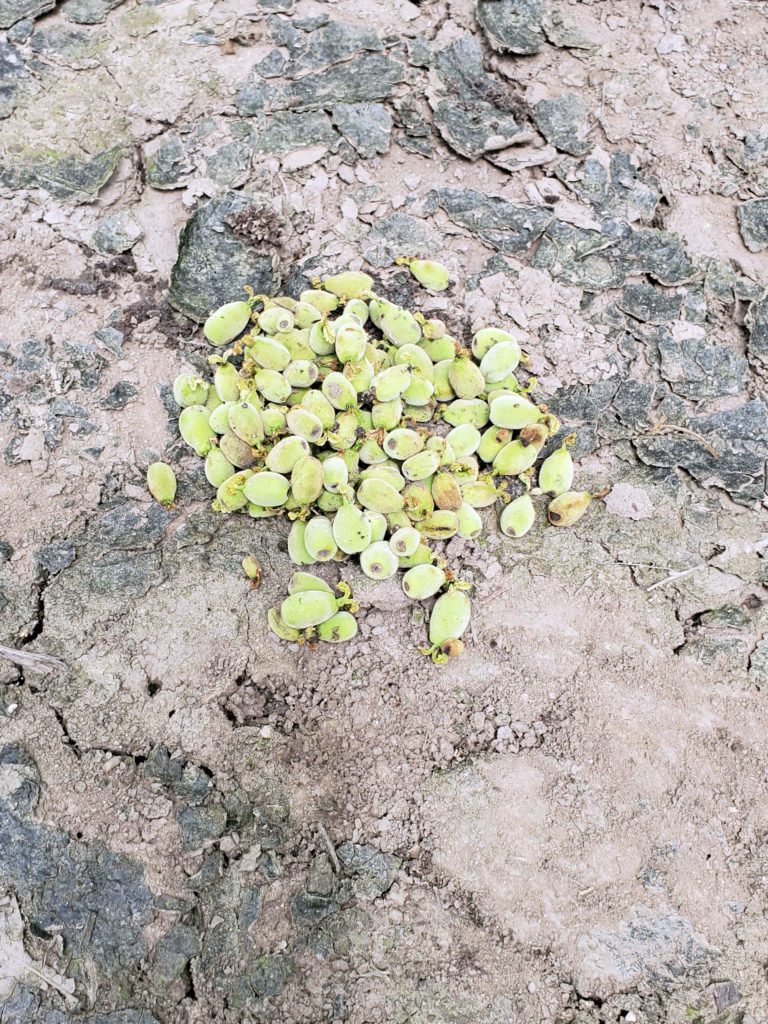
On the plus side, the rain and cooler temperatures have delayed the insect flight movement and overall spring activity this year, said Jhalendra Rijal, Ph.D., Area Integrated Pest Management advisor, UCCE and Statewide IPM Program.
Milliron and Nay both say they are seeing a pretty typical almond crop for the state so far.
“Some of the growers I have talked to have said yields may be just slightly off average,” Milliron added. “Almonds are incredible. Just like last year when everyone was so concerned after the freezing temperatures, and yet by-and-large the crop was fine. It looks like a similar situation this year.”
The main advice Milliron is giving to growers at this time in dealing with the wet weather is to use a pressure chamber or other irrigation management tools, like soil moisture, to determine irrigation needs and to really wait to irrigate until there is a real, actual need.
“Sustaining wet roots and any saturated conditions could cause problems going forward. Be very careful in making irrigation decisions,” he said.
Disease
“Although we made it through a wet bloom, we have seen some ranches with disease problems developing later in bloom,” Nay said. “Growers had to apply additional fungicide treatments to protect the late almond varieties from late rains.”
In addition, prior to bloom, almond growers had some frost conditions which lead to diseases such as bacterial canker.
“We’ve also seen numerous orchards with Phytophthora damage from being in too much water for too long of a period of time,” Nay added. “It has been challenging to identify a lot of these disease problems as the season has progressed, because often there are multiple problems in some fields. It has been challenging.”
Milliron agrees, and says he has also received a few calls for Blast symptoms in almonds.
Milliron sent samples to Themis Michailides, Ph.D. Plant Pathologist, Kearney Agricultural Research and Extension Center, and the samples came back as both the bacterium Pseudomonas syringae (which he said is what they typically associate with blast in almonds), and Botrytis, which is what he normally associates with jacket rot.
“The Botrytis was a little more unusual to see,” Milliron said. “But we think that we saw this because of later rains during the tail-end of bloom.”
Nay said, because of the late rains, growers are now faced with leaf diseases in almonds, such as rust, scab, and alternaria.
“In Northern California we have had a specifically challenging season with anthracnose that has spread to a lot of orchards where we haven’t seen it in the past, and it is being very aggressive,” he
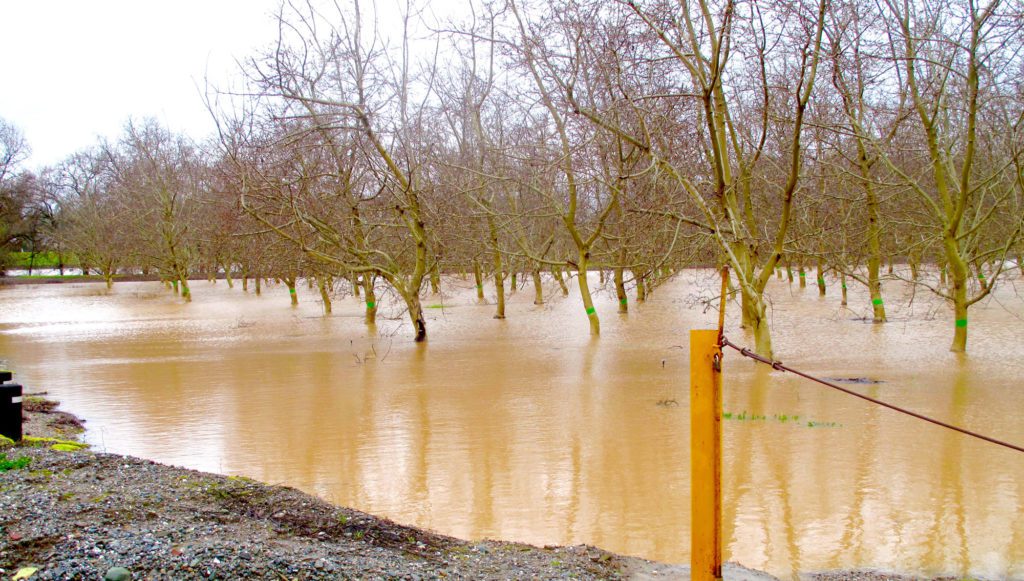
added. “Even at ranches with well-timed fungicide treatment, we are still getting anthracnose infections.”
Nay believes the last rain (the week of May 20-27) is going to cause problems at a lot of ranches, but the full indication of it won’t be seen for another couple of weeks. “We are just getting through our blight sprays and we are seeing some extension of blight at some ranches, probably more than usual due to the wet weather,” he said.
As for walnuts, Nay says it’s a little too early to know what may be dealing with in disease and pests and the overall quality of the crop.
“We are still waiting to see what the crop looks like. We had a lot of drop in the nutlets. One thing we are seeing is a wide range of nut sizes on the trees,” Nay said.
As growers and advisors continue monitoring orchards for disease development, Nay recommends more aggressive fungicide treatment to combat the disease problems created by the wet spring.
“At this point advisors and ranchers are trying to combat and manage it the best we can,” he added.
Rijal said that although he is not the expert on plant diseases, based on his conversations with growers, pest control advisors (PCAs) and pomology advisors, they are worried about the risk of higher disease incidence.
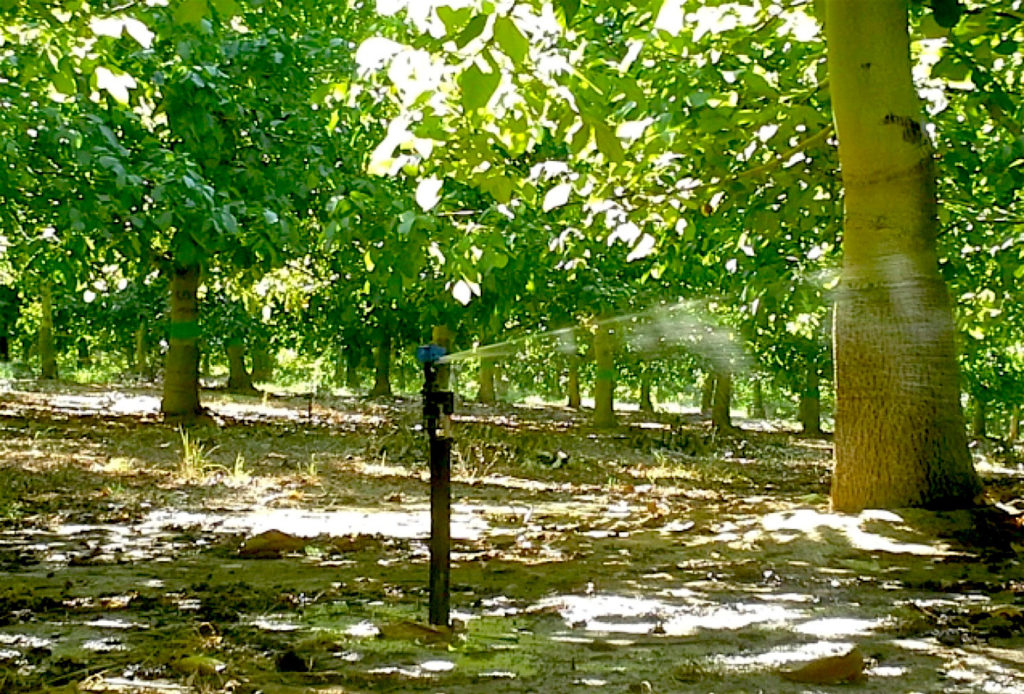
Pests
Due to the wet winter, nut crop growers have real difficulties for doing mummy nut sanitation due to less access of orchards, Rijal reports.
“This certainly impacted our ‘best value’ practice for Navel Orangeworm (NOW) control, for example, and removing and destroying the mummy nuts,” he added. “In spring onwards, the rain and cooler temperature have delayed the insect flight movement and overall spring activity this year.”
For instance, he said, codling moth biofix date is pushed by two weeks or so in the north San Joaquin Valley compared to previous years.
“Mites do not like rain and humid conditions, so we are good there, and with increased activities of mite predator sixspotted thrips in almonds in past few years, we are hoping that biocontrol will be more effective with relatively low mites population this year,” Rijal says.
He advises, avoiding the use of early-season abamectin and pyrethroids helps to conserve the thrips population in almond orchards.
“Although we see low to moderate Navel Orangeworm population in the spring and early summer, they can catch up as soon as the temperature warms up,” Rijal said. “More importantly, the alignment of the NOW flight and the susceptible stage of the crop development, such as hull-split, is believed to play a more critical role compared to the absolute indicator of NOW population for overall crop damage.”
So, watching upcoming temperatures and use of degree days, active monitoring of the NOW population, and careful observation of the crop phenology are important aspects in determining the timing for insecticide sprays to control NOW in nut crops, he says.
